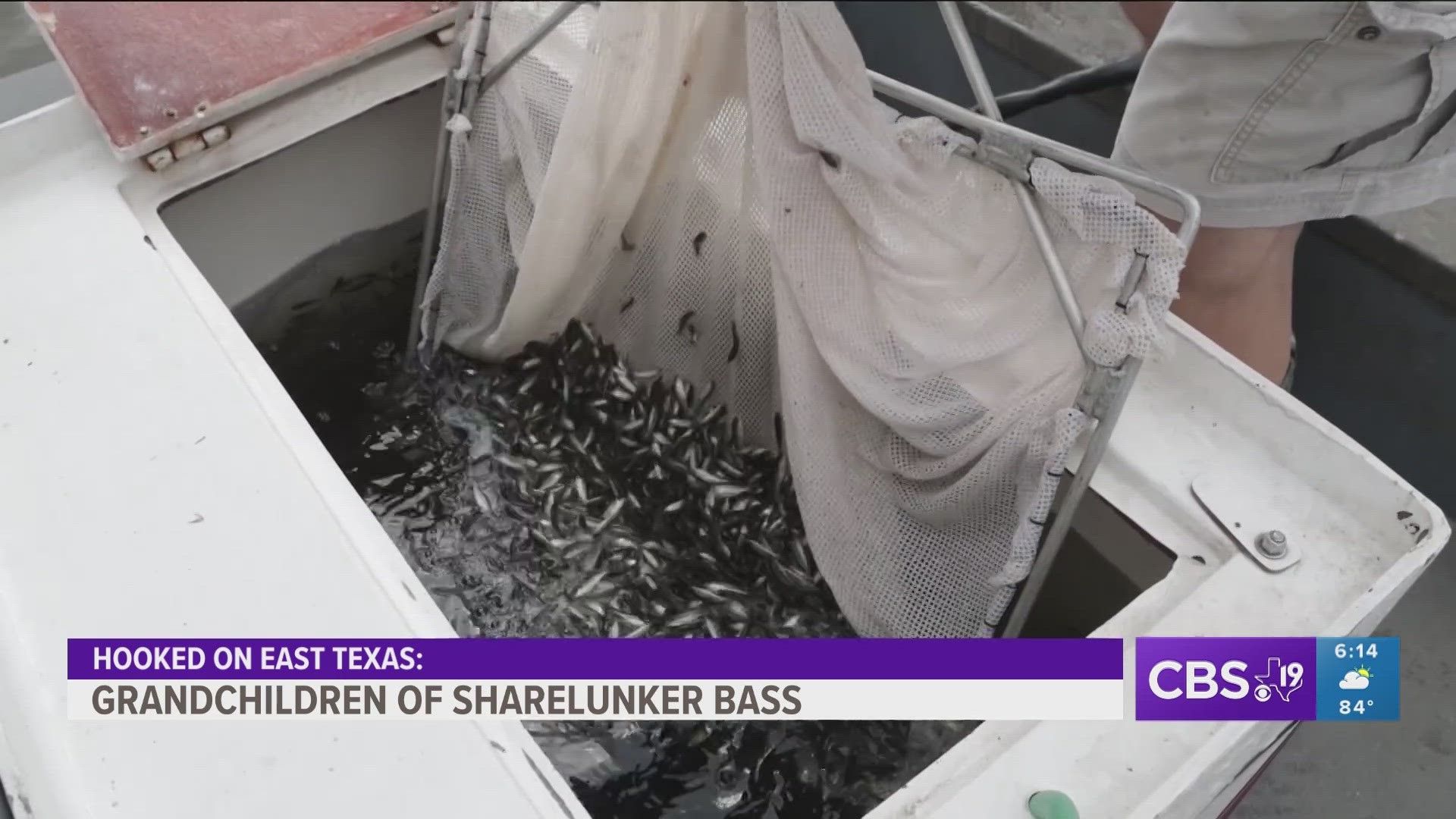ATHENS, Texas — The stocking of Lonestar largemouth bass is underway again this spring. Lonestar largemouth bass are the grandkids of some of the biggest bass ever caught in Texas.
This story traces the origin of the Lonestar largemouth and what brought us to the next chapter of Texas bass fishing.
We were there last May when technicians stocked thousands of fingerling Lonestar largemouth bass into Lake Fork. So this where the story ends right?
Wrong -- the stocking of Lonestar largemouth bass is just the next chapter of a storied bass fishing history.
To find out where this story starts, to really know how Texas Parks and Wildlife got here in the history of Texas big bass, we’ve got go back the start of the 20th century.
That’s when Texas started building reservoirs for agriculture, flood control and water sources.
Today, there are 1,100 reservoirs in Texas. The state fish of Texas is the Guadalupe bass found in the Guadalupe and Llano rivers in the Hill Country.
But in the 70s a new kind of bass was brought to Texas.
Tom Lang is the director of the Texas Freshwater Fisheries Center in Athens. The hatchery produces and stocks Lonestar Largemouth bass.
“Florida largemouth bass were in brought in by Bob Kemp who was the inland fisheries director back in the 70s and he actually paid for those out of his own pocket", Lang said.
Stocking Florida largemouth bass combined with research, rules and regulations came with big results. The Texas state record bass went from 13 pounds to 15 pounds by the early 80s.
Since everything’s bigger in Texas, the ShareLunker program kicked off in 1986.
"So then we started selectively taking of those some of those really big 13-plus pound females and selectively breeding those with other fish proven to that size", Lang said.
From 1986 through 2022, TPWD stocked millions of Florida largemouth bass fingerlings. Biologists say yearly stockings are needed because the weather conditions like a drought can't be controlled.
And there are natural fluctuations in bass having baby bass. But over time the stockings were all done with DNA in mind.
“We also do that to maintain a high genetic integrity of our wild population", Lang said.
It’s paying off -- 650 13-plus pound bass have been loaned to the ShareLunker program, including the state record largemouth bass that weighed more than 18 pounds in 1992.
Lang said these genetics are being used to produce Lonestar largemouth bass.
“These pure Florida bass that became ShareLunker bass are not just a pure Florida bass but a pure Florida that has proven to get over 13 pounds in this state. We held some of those back for brood stock and spawned those," Lang said.
That brings us to 2023 and the Lonestar largemouth bass. They are the grandchildren of ShareLunker bass and now TPWD is stocking millions of these fingerlings every year.
The fingerlings are predicted to grow to ShareLunker size over the next decade.
“As we continue to stock millions of these with that genetic capacity and our genetic research gets better, we’re only gonna see great bass fisheries get even better in the great state of Texas," Lang said.
When can you start catching Lonestar largemouth bass? We are told it will take the fingerlings stocked this year eight to 10 years to grow to the size of their ShareLunker grandparents.

